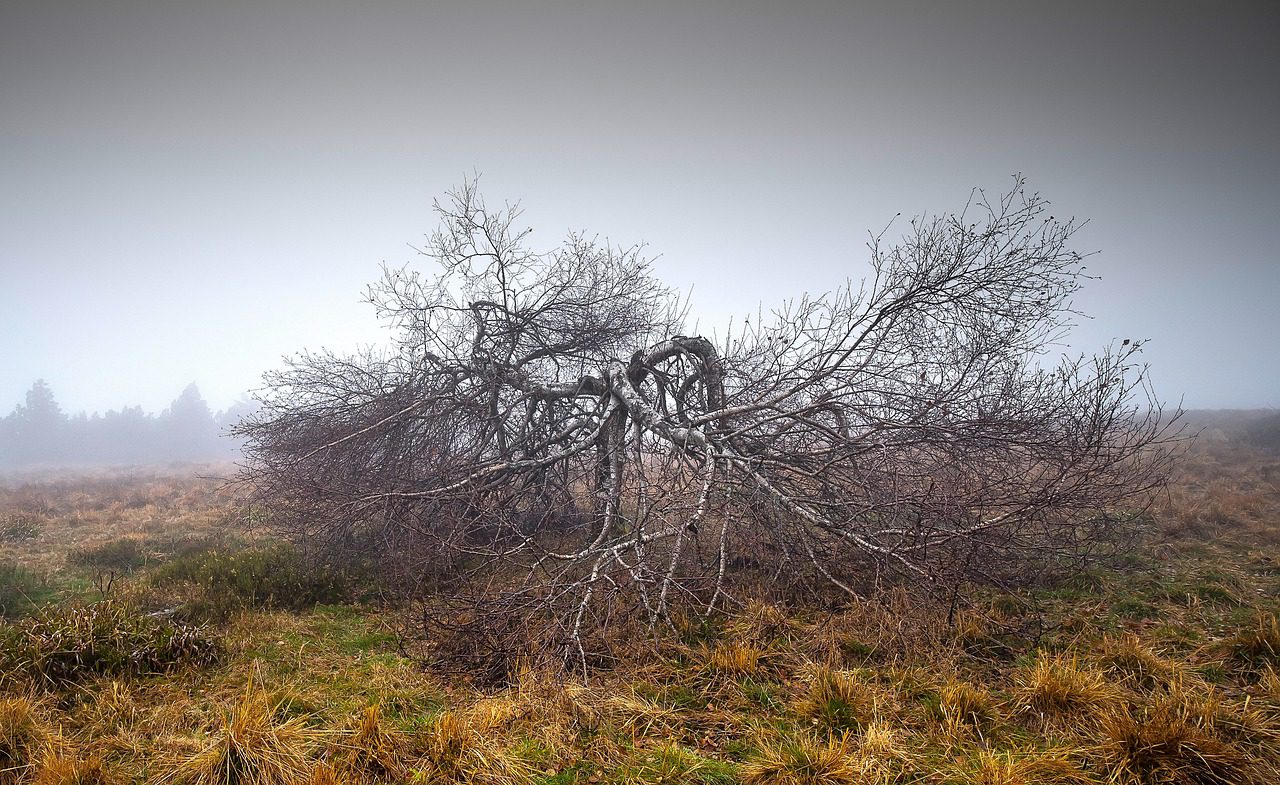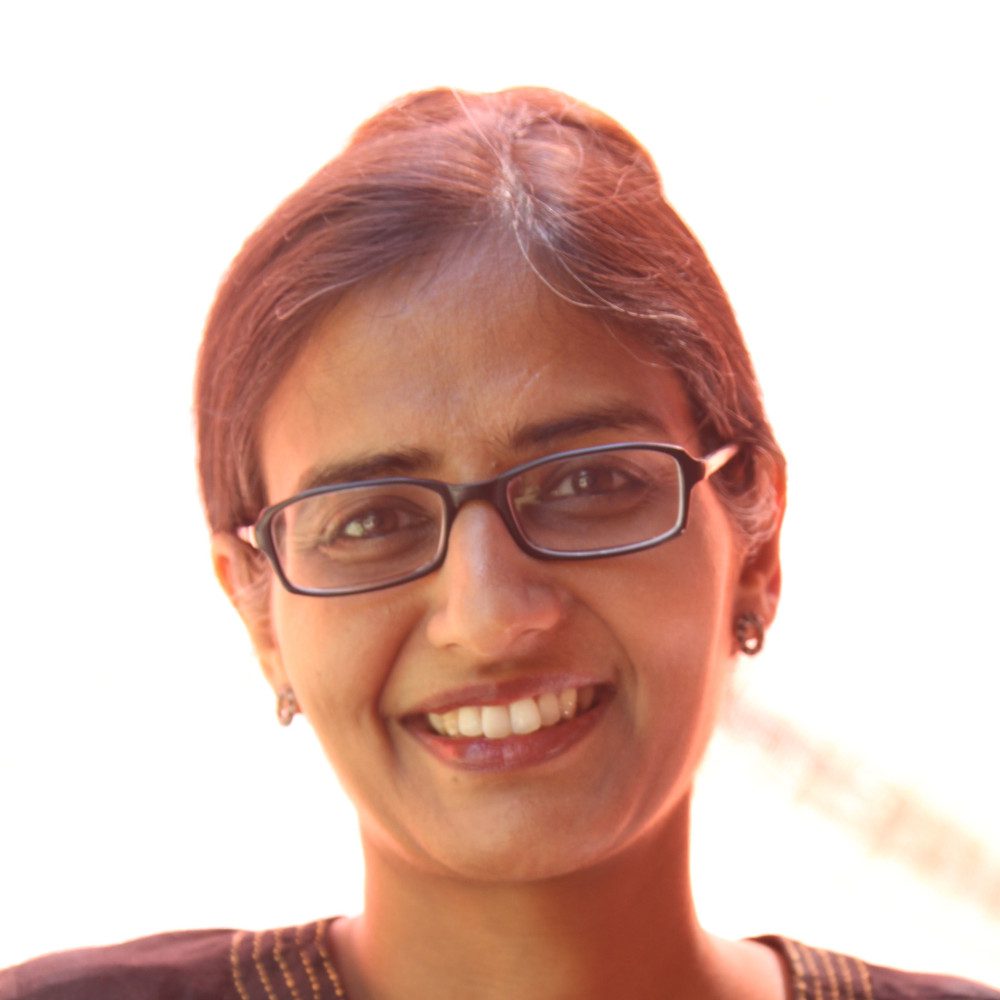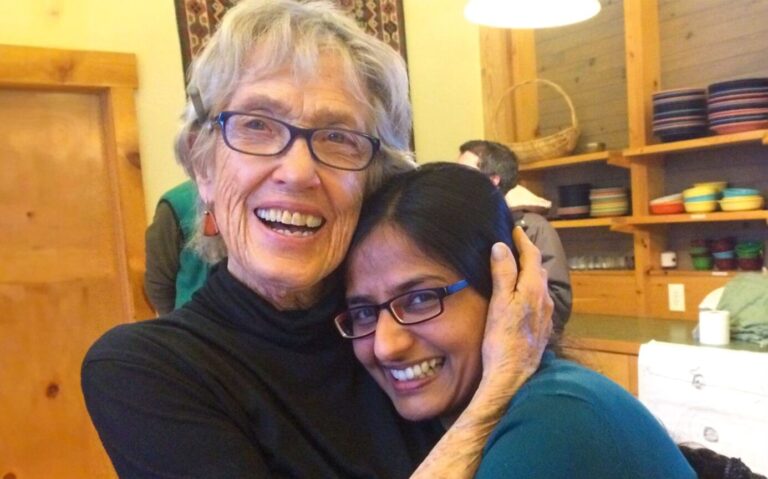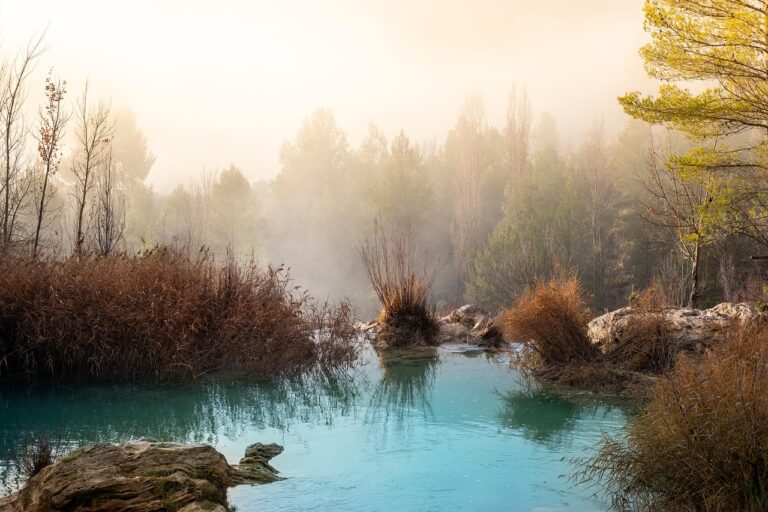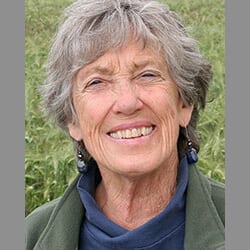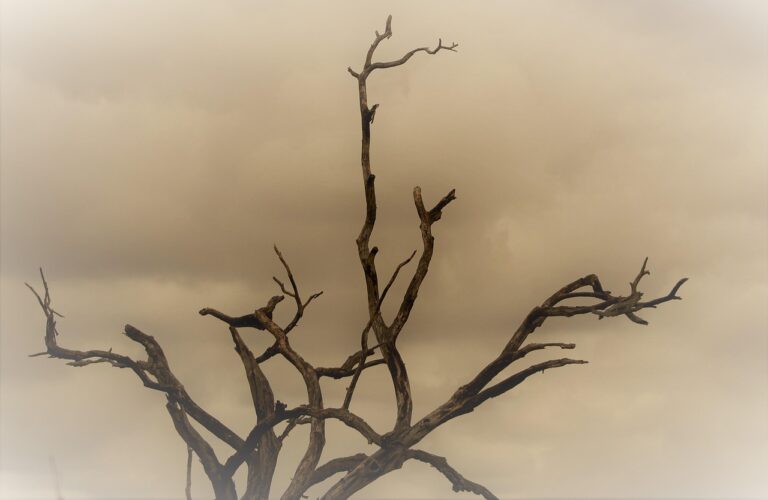This article was originally published on Tricycle. It is reprinted here with permission.
The sutta of Kisagotami Theri is one of the most famous stories in the Pali canon. Born into poverty, Kisagotami marries into a wealthy but patriarchal family that doesn’t respect her until she can prove her worth by giving birth to a boy. When she does indeed have a son, her life then takes a drastic and tragic turn when the infant falls ill and dies. After her son’s death, Kisagotami experiences what is described as “sorrow-to-the-point-of-madness,” and, carrying his body through the village, desperately seeks a way to bring her child back to life. Advised by a village elder, she appeals to the Buddha.
“Kisagotami, I have a way to bring your son back to life,” the Buddha told her. “I need you to find me a mustard seed from a house where no one has ever died.” Kisagotami then goes from house to house. At the first house, a young woman says her grandmother died a few months ago. She goes on to another house. The partner of the lady of that house had died a few years ago. The residents of the third house say that they’ve lost an aunt, and those of the fourth house have lost a child. Kisagotami finally comes to realize that there is no one in the world who has never lost a family member to death. She then understands that death is inevitable and a natural part of life. Putting aside her grief, she buries her son in the forest. She then returns to the Buddha and becomes his follower, eventually becoming an arahant.
In this poignant tale, I perceive the Buddha as a wise guide, skillfully leading Kisagotami through the labyrinth of her grief. Asking her to seek a mustard seed from a death-free household, he nudges her toward engaging in communal grief and rage ceremonies. Mustard seeds are one of the most common ingredients in Indian kitchens. Despite Kisagotami’s initial optimism in her quest, she eventually has to accept the inevitability of her grief.
Every time I hear news of the climate emergency, whether that of the Atlantic Ocean’s circulation slowing down or frozen methane melting near the Arctic Circle, it feels like a shocking blow to my body.
Picture Kisagotami knocking on doors, tearfully sharing her heartache with women who, having experienced their own losses, invite her to sit and share chai. Imagine them on a veranda under a banyan or pipal tree in India’s warm tropical climate, their stories intertwined with love, loss, and the complexities of life. Tears flow as they weave narratives, blending grief with the fear of an uncertain future or rage at the unjust circumstances that might have claimed their loved ones.
The Buddha, recognizing the depth of Kisagotami’s mourning, knew he could not immediately inspire her to seek THAT which never dies and is never born. Instead, he subtly guides her toward a web of communal belonging. By embracing and expressing their grief together, the women help Kisagotami recognize, release, and ultimately accept her profound sorrow. This journey through grief and rage, orchestrated by the Buddha, is a necessary step toward understanding and embracing the essential nature of impermanence, experiencing thusness (Tathātā), and accessing inner creativity or courage.
I feel that the time is ripe for Buddhist communities in the Western world to take inspiration from the Buddha’s use of skillful means to lead Kisagotami into joining the sangha. It is time to not just acknowledge individual-level grief and rage but to also acknowledge our collective emotions around the rapidly escalating climate emergency as well as other interlocking crises. The world—with its various ecosystems and many different people of all races and backgrounds—is our own extended interconnected “One Body.” We can’t bypass the emotional impacts of what is happening in the larger world and go straight toward meaningful action, whether for the climate, for other species or for our fellow human beings. I am increasingly finding that people need a sense of belonging before they can earnestly plunge into even a silent meditation retreat. Moreover, traumatized and numb people cannot sustain relationships. Without relationships, we cannot build our collective power. A vibrant and ongoing sense of local community that takes meaningful actions cannot be created without vulnerably connecting over stories and releasing our layers of personal and collective grief, rage, fear, and guilt-shame.
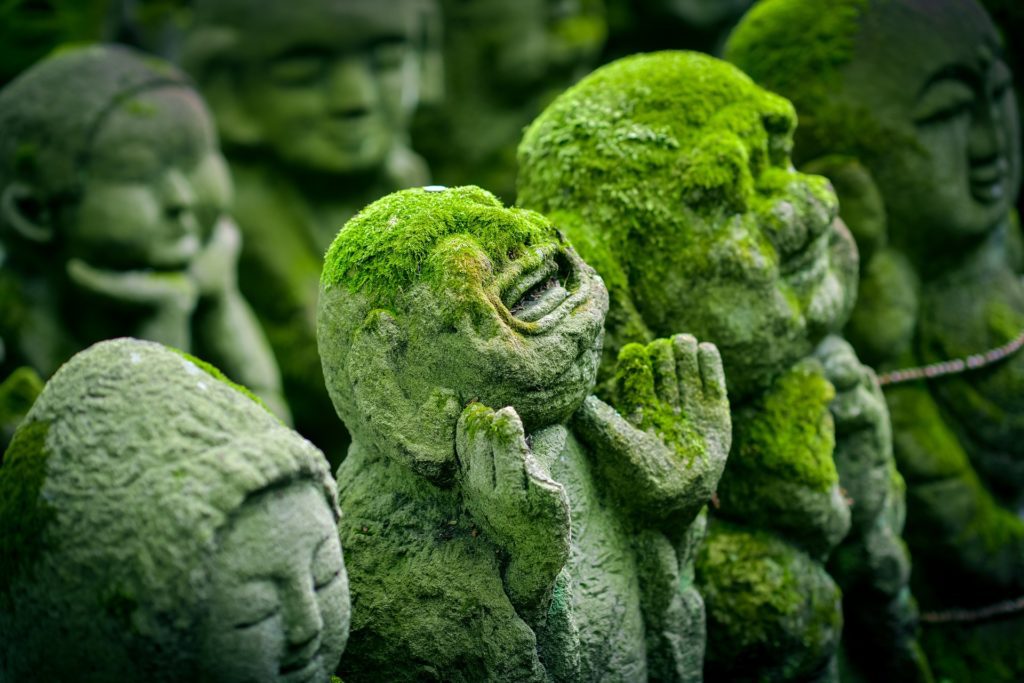
I have been researching climate change and the larger ecological crisis for decades, long before I became a Rinzai Zen priest, meditation teacher, grief-rage ceremony facilitator, and Ecodharma leader. I landed in the United States a week before the tragic events of September 11, 2001, to do a PhD in environmental sciences. When the tragedy unfolded, it became apparent how little infrastructure we had to handle such an event. At my university, a few classes were canceled and students were offered opportunities to speak to relatively unskilled therapists-in-training. No one addressed the collective grief or trauma of violence on the scale of 9/11.
A year later, I remember attending a graduate class where a world-renowned oceanographer talked about the devastated state of the coral reefs and the general health of our planet’s sacred oceanic waters. Coral reefs have always been awe-inspiring for me. When I listened to this oceanographer explain their research about the loss of coral reefs across the world, I felt my body freeze. I didn’t know what to say at the time, but I now understand what I needed in the middle of that class: I needed time for feeling and expressing my pain, maybe even weeping or sobbing. But, in all my professional career in leading universities and other organizations across the world, there has barely been any space for emotional or psychological processing of the dire state of our ecosystems.
Similarly, there hasn’t been any space curated for sharing climate grief or racial trauma in my Buddhist meditation groups. My Zen teachers individually supported climate action, racial justice, and made wishes for democracy, but our sanghas weren’t organized to name, process, or deal with sociopolitical issues in any meaningful kind of way. The two preoccupations of my life during my first fifteen years of my Buddhist practice—Zen and climate science—felt like two streams that ran parallel to each other but never intersected in conscious ways. In those years, I ended up believing that if we meditated long enough as individuals, we would experience and manifest our true clear compassionate and most courageous selves. And then, somehow, we would bring these qualities into the collective spheres of our lives, including the social, political, and economic systems around us. Now I no longer hold that view.
After I was given permission to teach the Zen curriculum independently, my husband, who is also a climate scientist, and I moved to Boulder, Colorado. I was desperate to find ways to inspire my sangha members there to get involved in taking “climate actions.” Together, with the wider Buddhist community in Boulder, we did some of the earliest experiments in the US with forming an Ecodharma community that tried to bring together Buddhism with climate action. People cared passionately about the climate crisis and, in some cases, had been meditating for decades. But they felt paralyzed, in a large part, by the emotional impact of the tragedies on their nervous systems.
In the years that followed, I would meet Buddhist scholar and environmental activist Joanna Macy as well as my grief ceremony teacher Beth Garrigus. Their imaginative communal work around releasing grief and rage was life-changing for me and connected the two preoccupations of my life. Their guidance made it clear that to address the root causes of slavery, genocide, and ecocide, the emotions around these issues must be fiercely, wisely, and lovingly brought into dharma spaces.
Even today, my climate grief and fear affect me to the core. I’m not the only scientist who loses sleep after spending my days looking at the latest climate research data—every time I hear news of the climate emergency, whether that of the Atlantic Ocean’s circulation slowing down or frozen methane melting near the Arctic Circle, it feels like a shocking blow to my body. My climate grief is also deeply entangled with what I know will happen to India, my homeland, and other places of emerging economies in Africa, Latin America, and Asia, as global temperatures soar and weather patterns are further disrupted. The people who have contributed the least to the climate crisis, whose wise indigenous cultures have been plundered to create hyper-individualistic economies, and who have the least financial resources to manage their local waters, air, and soils are already suffering the most. It is shameful that instead of joining hands to face the climate derangement, the current global geopolitical order is inflicting gory violence upon people in the Middle East, where everyone will be displaced by ongoing global heating in the next few decades.
We need communities to release our tears, make sounds, and shake our bodies before we can sit down for long hours of silent meditation or take truly radical actions.
Reading this, you might want to take a deep breath and even allow for tears. Some of my fellow scientists are already regularly dealing with panic attacks and chronic depression because of the nature of our work. When climate scientists, social justice advocates, firefighters, or other frontline crisis managers, journalists, mothers, or really anyone who cares about the state of our world, are processing the shock of yet another awful headline, we need communities to release our tears, make sounds, and shake our bodies before we can sit down for long hours of silent meditation or take truly radical actions.
You might say only trained psychotherapists should hold the role of holding space for grief and rage. We, unfortunately, don’t have enough skilled and loving psychotherapists in this country or around the world to help deal with the layers of interlocking traumas that we are already dealing with on our planet. And we certainly won’t have enough of them as fears of climate induced collapse escalate. Most crucially, if we wish to step into our collective and creative agency as a community, nothing works better than being vulnerable together. Our sanghas sorely need to develop their own capacities to help their communities recognize, express, release, and accept our pain. Thankfully, there are already a number of Buddhist leaders, including those trained by beloved elder Joanna Macy, who can bring grief and rage ceremonies to dharma communities. Let us explore these possibilities.
We are experiencing an epidemic of social loneliness, and therefore numbness, around our climate grief and other traumas perpetuated by the global systems of oppression. My years of experience facilitating grief ceremonies tells me that when we grieve and rage wisely, in a circle of belonging, we feel safer. Much like Kisagomati, when we grieve collectively within our communities, we come to insights and understanding; we build our power, and our collective ancestral resilience and the seeds of courage necessary for collective action can blossom.

